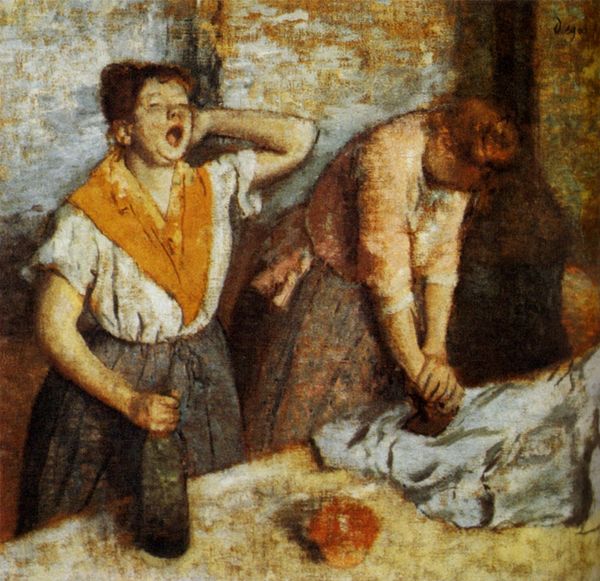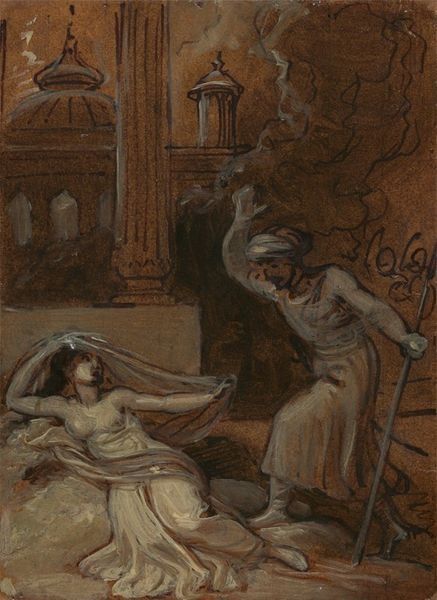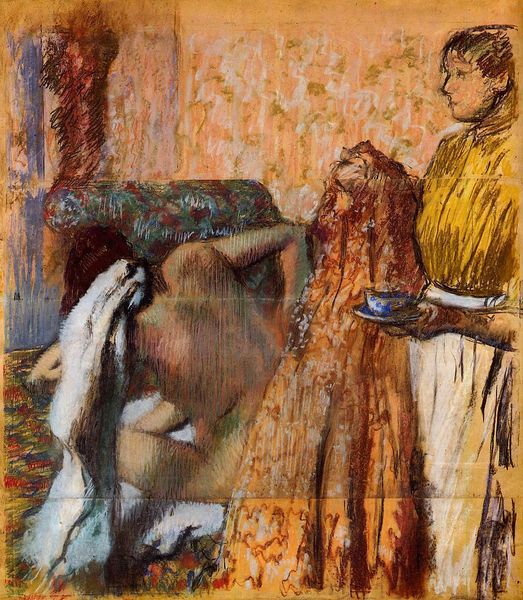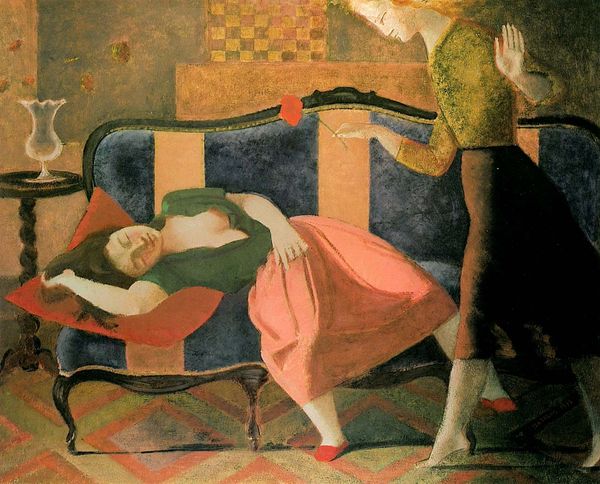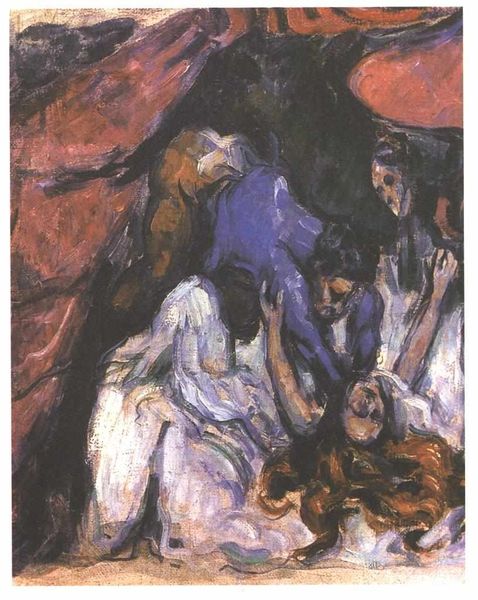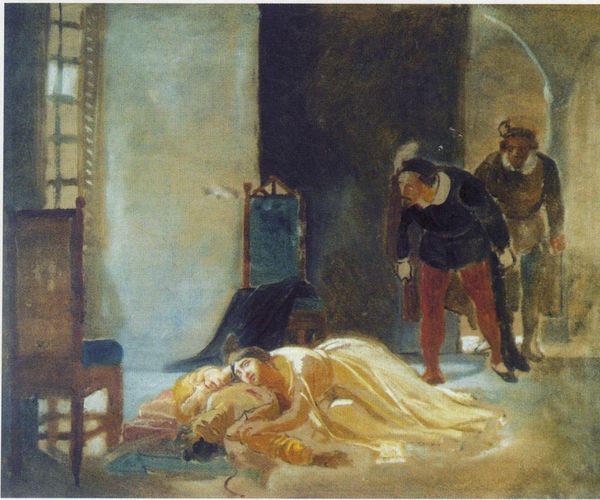
drawing, pastel
#
portrait
#
drawing
#
impressionism
#
oil painting
#
france
#
genre-painting
#
pastel
Copyright: Public domain
Editor: Degas’s "In a Laundry," created in 1884 using pastel, gives us such an intimate look at these women. I’m immediately struck by the contrast between the woman holding up the fabric and the slumped figure beside her. What's your perspective on this piece? Curator: It's critical to look at this work through the lens of labor and class. Pastel, while seemingly delicate, was a relatively inexpensive medium, aligning with Degas’s portrayal of working-class women. Notice the repetition of lines – in the hanging laundry, the women’s skirts, the very folds that consume their time and bodies. It speaks volumes about the repetitive nature of their toil. How does the rendering of their bodies contribute to this understanding? Editor: Well, the woman standing appears quite animated, perhaps even singing while holding the garment. The other, however, is bent over, seemingly exhausted. The colours feel quite different too – vibrant for one, muted for the other. Curator: Precisely. Consider what materials were available for these women, what they would have been working with day in and day out. Degas isn't just depicting laundry; he is revealing the material realities and economic burdens of these women. Does this change your view on why he chose to represent them in this setting with these materials? Editor: I think it does. The choice of pastel and the almost raw depiction become less about aesthetic choice and more about documenting the lived experience. I see it less as a snapshot, and more like a commentary on these women’s labour and position in society. Curator: Exactly. Examining art through its materials and their socio-economic implications truly enriches our understanding. It takes it beyond surface appearances. Editor: Definitely! It really underscores how materials themselves can speak volumes.
Comments
No comments
Be the first to comment and join the conversation on the ultimate creative platform.
